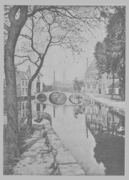Fascinating series at Indiana University Press: The Spatial Humanities.
“The spatial humanities is a new interdisciplinary field resulting from the recent surge of scholarly interest in space. It prospects a ground upon which humanities scholars can collaborate with investigators engaged in scientific and quantitatively-oriented research. This spatial turn invites an initiative focused on geographic and conceptual space and is poised to exploit an assortment of technologies, especially in the area of the digital humanities. Framed by perspectives drawn from Geographic Information Science, and attentive to cutting-edge developments in data mining, the geo-semantic Web, and the visual display of cultural data, the agenda of the spatial humanities includes the pursuit of theory, methods, case studies, applied technology, broad narratives, persuasive strategies, and the bridging of research fields.”
Seems the “spatial turn” has not run out of steam, indeed.
The series fits in particularly well within the larger conglomeration of publications working with space and the humanities, such as Palgrave’s series on Geocriticism and Spatial Literary Studies and recently appeared journals such as Literary Geographies and Cultural Urban Studies. Exciting to be part of a dynamic and multidisciplinary field of study!
—
Update: and just as I ponder the return of the spatial turn, I bump into this:
cfp for the “spatial turn/return” at the ACLA, Harvard, 17-20.3.2016.
“With the theme “Spatial Turn/Return,” we hope to explore space in its multiple, simultaneous, and plural manifestations–histories of practices and encounters of/with/in space and the theoretical and aesthetic articulations, disillusioned and empowering, that are constructed and mobilized around space. We also welcome papers that explore the many ways in which works of literature and popular culture reflect changing perceptions and definitions of space.”


